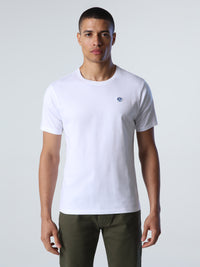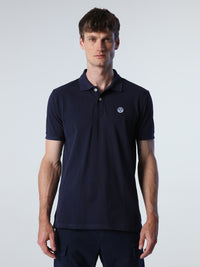INTERVIEW WITH C&C 30 OWNER ANGUS DAVIS
INTERVIEW WITH C&C30 OWNER ANGUS DAVIS
Angus Davis took time out of his busy day job to answer some questions, after winning the 12 boat Annapolis NOOD on Nyabinghi in this hot new one design class.
YOU ARE AN EXTREMELY BUSY GUY, HOW DO YOU ORGANIZE YOUR PROGRAM TO HAVE SUCH A SUCCESSFUL RESULT?
Racing the C&C 30 is a “mind clearing event” … during my time on the water, I am in control of boat speed and the maneuvers, and everything else fades away. The key is being able to focus on sailing—and this is what attracts me. For a busy business person, competitive sailing is an oasis.
WE UNDERSTAND YOU COME FROM A WOODEN BOAT BACKGROUND. HAS IT BEEN DIFFICULT LEARNING A NEW PLATFORM?
I grew up sailing Herreshoff S Boats with my dad, in Narragansett Bay. They were the C&C 30 of their day: 28 feet long, high performance for their time, and most importantly, one design. The Narragansett Bay fleet is the oldest one design fleet in America still racing in their original boats. I thought my lack of planing keelboat experience would be a disadvantage, but I picked it up quickly thanks to good teachers. And my experience one design racing is an advantage over those with backgrounds in IRC or other handicap racing.
WHO IS ON YOUR CREW? WHAT ARE THEIR RESPONSIBILITIES? DO YOU ALWAYS SAIL WITH THE SAME PEOPLE?
We have some “steady” folks on the crew, like our runner guy. We call him Bobcat but his real name is Nick Campagna. When he drops the winch handle overboard, usually once every few regattas, we call it a “Bob-splash.” On one occasion, he dropped a VHF overboard, which we refer to as a “Bob-squawk.”
In the pit we have a rotation between Leeds Mitchell and Chase Hogoboom. Both are longtime personal friends who would bail me out of jail if afforded the opportunity. (I hope to avoid this.)
On bow, we usually have Norm Berge. We have been fortunate to have him aboard… and like all the folks on the boat, he has a positive attitude.
Usually on main trim we have Pete Levesque, who is one of our two Cat 3s. His knowledge of rig tune gives us a leg up, and sometimes we share dad advice between starts.
In Annapolis, Charlie Enright trimmed main and trimmed the kite downwind. Every day on the water with Charlie I consider a privilege.
On headsail trim, we have many “friends and family” helping with different events. In Annapolis, Chuck Swanson did a good job in this position. Sometimes the headsail trimmer becomes the whipping boy for the tactician, but in reality, any boatspeed problems upwind are usually the owner/helmsman’s fault.
Over the last year we’ve had a range of folks calling tactics and I have learned different things from each of them. In Annapolis we had Mike Buckley. Mike is able to raise our level of competition without unduly raising our personal stress levels.
HOW WAS YOUR SPEED THROUGHOUT THE COURSE OF THE EVENT?
On the last day, we had some sort of asymmetry in our rig setup, which hampered our speed on one tack. Otherwise, our upwind boat speed was an effective weapon against the competition. Over the last year, I have really improved with our team in a range of different wind conditions, and also in tight tactical situations where you need to “live in a tight lane.” I feel like we definitely have this gear in all conditions now.
Off the breeze, we have moments of greatness for sure, but it’s not yet the strength I know it will be with a bit more work.
HOW CRITICAL IS RIG TUNE THROUGH THE RANGE OF CONDITIONS?
The boat is highly sensitive to rig tune adjustments. You have to live with your rig tune for the entire race, so part of this means skating to where the puck is going to be. Having the right rig tune won’t win races on its own, but having the wrong tune can lose them.
You looked to be consistently in the top group in most of the races, how did you manage to do that in such different conditions? The biggest contributing factors to our success were: competitive boat speed, smart tactics, and not making too many bad boathandling mistakes.
WHAT ARE A COUPLE THINGS YOU AND YOUR TEAM DO DIFFERENTLY THAN OTHER BOATS?
The name of our boat is a tribute to reggae music, which is full of positive energy. We are serious about winning, but we try to have a lot of laughs. Look forward, let’s go: that’s our team’s attitude, and it has served us well, in both victory and in defeat.
Also some of our other close competitors sail with another brand of sails. On Nyabinghi, the focus with our friends at North is always on learning, development and improvement. Working with North Sails gives us a technological edge, which appeals to me as the executive of a software company.
NOW THAT YOU HAVE SAILED A COUPLE EVENTS IN THE C&C 30 CLASS, WHAT COMMENTS DO YOU HAVE ON THE BOAT AND CLASS?
The boat is a pocket rocket that offers true one-design competition. The class is owner-driver with clear, strict rules that give everyone a chance to win. The racing is close, and the camaraderie off the water is strong. And the sailors are very welcoming of newcomers.
IF YOU HAVE TO GIVE THREE POINTERS TO OTHER TEAMS ON HOW TO GET THE BEST PERFORMANCE OUT OF THE C&C 30 WHAT WOULD THESE BE?
Manage your heel angle, and get the foils working for you upwind.
Don’t get too cute at the start, i.e. don’t strike out at the plate swinging only for home runs.
Always remember it is a privilege to be able to go sailing, so have fun on the course and keep a positive attitude.
WHAT’S NEXT FOR THE NYABINGHI PROGRAM?
We’ll compete in the NYYC Annual Regatta in June, and in the Race Week at Newport in July, which are our North American championships. That event ends on July 16, just 5 days before our third child’s due date! My wife Joanna told me, “With a sufficient outboard motor, you are no more than an hour or so from anywhere the next baby may be born.” In our family, sailing runs deep.
Nyabingi races with North Sails 3Di RAW upwind and North Paneled Cloth (NPC) downwind sails.















